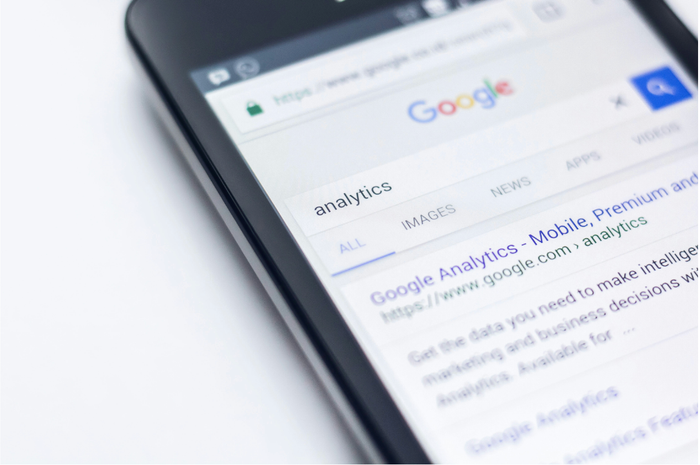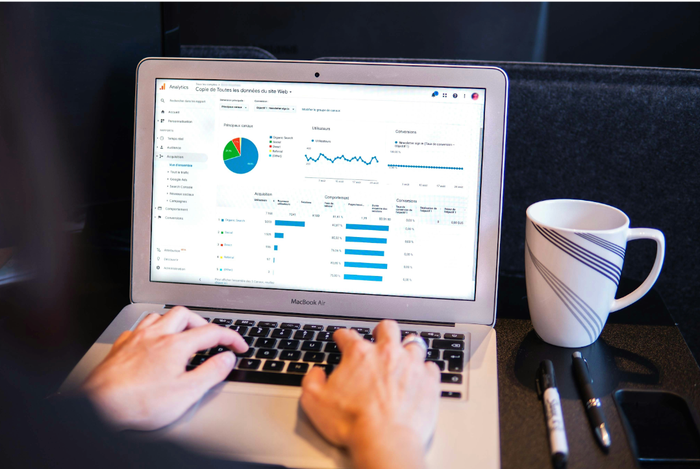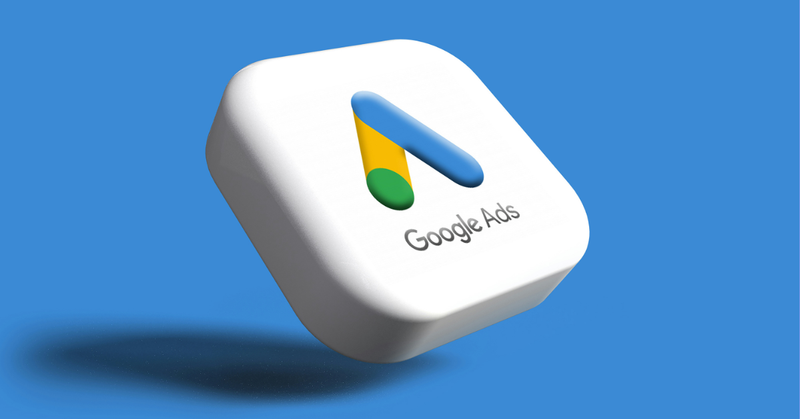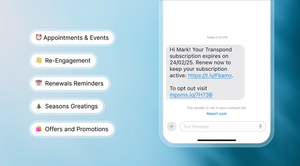Setting up ad groups isn't as complicated as you might think - but the real challenge is getting your campaign settings right. Google ads work to increase your website traffic and conversions, but the process is different from other methods like SEO.
Whether you're creating your first Google Ads campaign, or you're just trying to hone your skills, you need to understand the specifics. One of the most common questions asked when building your first campaign is - how long should it run for?
In this blog post, we'll explore the basics of Google ads and help you make the right decisions when creating and running your own Google ads campaign.
What are Google Ads?
Google Ads are an online advertising platform based on a bidding strategy. They let you advertise your products or services by targeting keywords that users search for. Google ads can come in different formats including text ads, video ads, banner ads, and more.
To get your ad to appear on Google you must pay a fee. The cost is determined by a bidding process. The more you pay for someone to click on your ad, the higher it will appear on search results.
This is entirely different from organic search listings - those that aren’t paid, and instead, earned based on the content you have on your website - which are ranked based on relevance to user queries and other factors.

How do Google ads work?
You create an ad, place a bid, wait for it to be accepted, and begin to show up on search results.
Most Google ads work on a pay-per-click action pricing model, which is usually calculated as cost-per-click. This means you’ll pay a set price every time a user clicks on your ad or completes a specific goal or action. The price will change depending on a few factors including:
- how competitive the word is
- the number of other businesses bidding on it
- search volume (how many people are searching for it)
- predicted reach (how many people could see your ad)
- time of day/year.
Bidding strategy
When placing a Google ad you need to specify your maximum bid. This essentially means the highest amount you’ll pay for a click, view, or any other defined action.
But isn’t always about the highest bid. Google Ads considers a few factors before selecting an auction winner. This includes:
- Max cost-per-click (CPC): This is the maximum amount you’ll pay for a click on your Google ad.
- Quality score: A metric that evaluates the quality and relevance of your ad based on your predicted click-through rate.
- Ad Rank thresholds: Google takes quality very seriously. To be considered your ads must meet a certain threshold to be seen by users.
- Auction competitiveness: Companies constantly compete for high-value spots as the highest-ranked ad usually wins.
- Search context: Google Ads takes into account the searcher's context. This includes their search terms, location, device type, and time of search, to deliver the most relevant ads.
- Impact of ad assets and formats: Assets like phone numbers and additional links can boost your ad's effectiveness. Google Ads predicts how these assets can affect your ad's performance, improving visibility and engagement.
Types of Google Ads bidding strategies
There are many different ways you can bid for Google ads, but typically, companies stick to three main strategies:
- Manual bidding
- Automated bidding
- Smart bidding
Here’s more detail:
Manual CPC bidding
Cost-per-click (CPC) bidding lets you set and adjust your bids at the keyword or ad group level. Put simply, users specify the maximum they're willing to pay for each click on a keyword.
This approach gives you total control of your campaign budget but actively managing multiple campaigns is time-consuming. Also, any mistake could prove costly, so you must dedicate significant resources to ensure everything is correct.
How does it work?
- Set your maximum bid: Decide the highest amount you’ll pay for a click on your ad
- Adjust bids manually: Modify bids as needed to control spending and align with your advertising budget
- Monitor and optimize: Regularly review and adjust bids to enhance ad performance.
Automated bidding
Automated bidding uses algorithms to optimize ad bids. This strategy focuses on performance goals to maximize getting clicks or conversions.
With automated bidding, you can save time while optimizing your ad campaign for improved return on investment. However, you have less control over your budget, so it can be more costly in the long run.
How does it work?
- Algorithm-based optimization: Google uses an algorithm to automatically set bids based on performance goals
- Real-time adjustments: The tool continuously adjusts bids in real-time to maximize clicks or conversions
- Performance focus: This then improves ad performance while saving time on bid management.

Smart bidding
Smart bidding is a subset of automated bidding strategies in Google Ads. It’s designed to optimize conversions or conversion value in real-time by using Google's AI.
Also known as auction-time bidding, the tool considers things like device, location, and time of day to enhance bid precision. Smart bidding is ideal for anyone wanting to use AI to improve the efficiency of the bidding, especially when conversion optimization is your primary goal.
How does it work?
1. Auction-time bidding: Google's AI adjusts bids in real-time during each auction
2. Signal consideration: It analyzes signals such as device, location, and time of day to optimize bids
3. Conversion optimization: Focuses on maximizing conversions or conversion value to improve campaign performance.
Types of Google ads to consider
Google ads come in many different forms and the type you choose impacts your campaign performance. Let's explore the different types of Google ads available and potential use cases.
Search ads
Search ads appear on Google search results pages after users search for specific keywords relevant to your business. They typically link to a specific page and include a headline, URL, and a short description.
These are ideal when trying to reach users actively searching for products or services similar to yours. Search ads are highly targeted making them great for companies driving conversions.
Display ads
Display ads are shown on websites that are part of the Google Display Network. These include millions of sites across the internet and are versatile as they can include text, images, or rich media.
These ads are great for raising brand awareness and retargeting users who have previously visited your website. They are less targeted than search ads making them useful when reaching a broad audience.
Video ads
Videos ads appear on sites like YouTube and other video partner sites. They come in different formats including skippable pre-roll ads, non-skippable mid-roll ads, and short bumper ads.
Videos are very engaging types of content. A good video ad helps promote brand awareness and could demo your product, ultimately driving traffic to your site.

Shopping ads
Shopping ads are useful to showcase products. They appear in Google Shopping results (sometimes in regular Google search results) and display a product with images, prices, and merchant information.
Perfect for e-commerce businesses looking to display their products directly in search results, these ads make it easy for users to get product info from Google Shopping and compare prices.
App ads
App ads are perfect for marketers looking to promote mobile apps through Google Search, Google Play Store, YouTube, and the Display Network. They’re designed to drive app downloads and grow user engagement.
These ads are recommended for increasing app installations and in-app actions to a wider audience.
Discovery ads
Discovery ads are found on Google Discover, YouTube home feed, and Gmail. They’re visually rich meaning they're great at targeting users based on their interests and behaviors.
These ads are useful for reaching users who aren’t actively searching for your products. Instead, they target users based on their online activity and preferences.
Local ads
Local ads promote your business locations on Google Search, Maps, and the Display Network to help local businesses drive foot traffic and conversions.
These ads are useful for businesses promoting their physical location to attract nearby customers and increase in-store visits.
Performance Max ads
Performance Max campaigns use machine learning (ML) to optimize ad performance across all Google Ads formats. This includes search, display, video, and more so all of your Google ads campaigns perform at a continuously high level.
This is ideal for marketers who want to access all of their Google Ads inventory from a single campaign and reach across multiple channels with a single, automated campaign strategy.
Responsive ads
Responsive ads are just that - they automatically adjust their size, appearance, and format to fit available ad spaces. They can include a combination of text, images, and videos making them work for any potential space.
These ads are great for maximizing reach and engagement by adapting to different placements and platforms, ensuring your ads look great wherever they are.
Benefits of Google ads
Although costly, there are a few reasons why a company might choose to run a Google ad campaign. These include:
- Quick visibility: Google ads help you get your content to the top of Google search results fast. Your bid strategy directly affects the success of your Google ad campaign so you don't have to worry about the multitude of factors that influence organic search results.
- Flexibility: Google ads can come in different formats including text ads, image ads, video ads, and more.
- Precise segmentation: You can create Google ads with expert precision and target audiences based on age, interests, or geographical location.
- Remarketing: The right campaign can help you re-engage users who have previously visited your site but haven't converted.
- Cost options: While pay-per-click (PPC) is one of the more common ways to run Google ads there are alternatives like cost per thousand impressions (CPM) and cost per action (CPA).
- Measurable results: Your Google ads account provides comprehensive performance results letting you track different marketing metrics.
How long should you run a Google ads campaign?
So now the real question is, how long should you run a Google ads campaign? Well, actually, it's longer than you might think.
While Google Ads are faster than traditional SEO and organic approaches, they're not a quick fix. Google Ads need at least three months or mature but may need another four to 12 months to enjoy success.
Google needs to collect a lot of data before it can serve your ad to the right audience. Before then you might see a mismatch of results instead of the well-functioning ad program you’re after.

How to write a Google ad
When creating a Google ad there are a few steps you need to follow. You start by identifying your target audience and selecting the best format for your business goal. Keyword research is a key part of creating a Google ad, you need to know what your target audience is searching for so you can reach them.
Your ad copy needs to be concise and eye-catching. Google can get your ad in front of the right audience but it’s up to you to make them click through to your page. Fortunately, Google has a range free guides to help you get started.
How to design Google ad images
Images are an important part of any Google ad, so let’s explore how to create your own in five simple steps:
- Know the requirements: Your images need to meet Google's ad specifications, including aspect ratio, resolution, and file size.
- Keep it simple: Select clear, high-quality images with minimal text. Focus on your product or service.
- Brand consistency: Make sure to utilize your brand colors, logo, and style to maintain consistency.
- Highlight value: Showcase the benefits or unique features of your offering.
- Use a strong call-to-action: Encourage users to take the next step and convert
First steps when running a Google Ads campaign
After activating your Google ads account, you'll need to wait between 24 and 48 hours for Google to review and approve your account. It will take another seven days for Google to:
- Gather important data about your business
- Learn the types of topics you cover
- Examine and explore your target audience.
The length of the process depends on things like the size of your business and target audience.
Here,, it's not unusual to see a relatively small number of desired impressions and clicks from your daily budget. But this is for a good reason, Google won’t spend your full daily budget until it has carried out some tests.
Small businesses should initially aim for 15 clicks per day, per ad group and at least 200-300 clicks on keywords a month. Having this target in mind is useful because you’ll gather enough data to identifywhether current tactics are working. If you're not hitting these goals you may need to rethink your campaign budget or Google Ads set up.
What happens next?
Google Ads will stop collecting data after the first week of activation, but this doesn't mean leads will flood in. It takes two to four weeks for your Google Ads campaign to pick up speed, so don’t make any big changes to your ad account before then.
To be successful you need Google to collect as much data as possible about you and your needs and constantly updating your account can make this tricky.
During this period you want to ensure your click-through rate (CTR) is not being ranked.
Measuring CTR
Click-through-rate (CTR) is the most important factor when determining the relevance of your ad campaign. Without this metric, Google has to explore other factors like:
- Keyword to ad relevancy
- Ad to landing page relevancy
- Website load time
- Historical account performance.
If Google can't accurately evaluate your campaign, then it’s risky for them to show your ads alongside those of advertisers with proven track records, known as High-Quality Scores. That’s why some marketers turn to AI ad creative tools to help campaigns adapt faster and improve performance across multiple formats.
This benefits your business because you won't have to compete directly with businesses that have higher scores.
Once you complete Google ad’s learning process, you can update your ad to help improve conversions and increase your quality score. This will provide a better experience when competing with established Google Ads advertisers.

Wrapping up
Determining the ideal duration for running a Google Ads campaign is crucial for its success. While setting up ad groups and campaigns might seem straightforward, fine-tuning your campaign settings is challenging. e.
The first step is identifying your targeting options, including who you want to target and why.
The key to this is conclusive and detailed customer data.
Without it, you could make costly mistakes that could affect the success of your Google ads.
Smart businesses invest in customer relationship management systems to help them collect, store, and manage their customer data.
Try Capsule CRM free for 14 days and discover how it can help you and your business.




